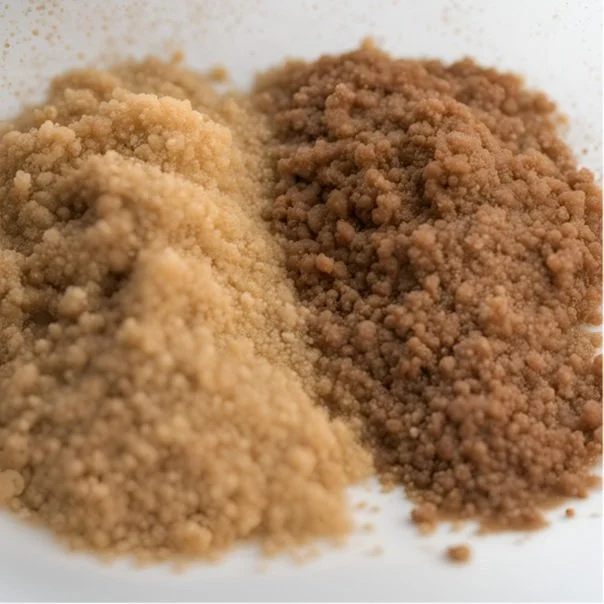Speculoos (Homemade Biscoff)
I first tasted these when I was traveling abroad back in the 90s. If you haven’t had them before, the taste is similar to a graham cracker with superpowers or a gingerbread snap (but a little different). See this article about how Delta Airlines began serving them.
Belgian brown sugar is the lead singer in this recipe. Let’s talk about the difference in what you get in most US stores and the type used in this recipe.
Traditional Brown Sugar
Brown sugar is typically made by mixing refined white sugar with varying amounts of molasses. During the refining process, molasses, which is a byproduct of sugar production, is separated from the sugar crystals. To make brown sugar, some of the molasses is reintroduced into the white sugar, either through a controlled blending process or by coating the sugar crystals with molasses. The amount of molasses added determines the color and flavor intensity of the brown sugar, with darker brown sugars containing more molasses. This process results in a soft, moist sugar with a malty and slightly darker color compared to white sugar.
Belgian Brown Sugar
Belgian brown sugar, known as "cassonade" or "sirop de Liège," is traditionally made through a unique process. The process begins with the extraction of sugar from sugar beets. These beets are processed to extract the juice, which is then filtered and evaporated to form a thick syrup. This syrup undergoes further processing where impurities are removed, resulting in a concentrated solution of sugar.
To create the distinct flavor and texture of Belgian brown sugar, this concentrated sugar solution is heated and stirred continuously in large vats. This heating caramelizes the sugars, giving the syrup its characteristic rich, caramel-like taste and dark color. The mixture is then poured into molds to solidify. The resulting brown sugar blocks are dense and have a deep, complex flavor profile compared to regular refined sugar. This traditional method of producing Belgian brown sugar yields a product with a unique taste that is often used in Belgian baking and cooking, imparting a rich sweetness and depth to various dishes.
Ingredients
1 cup butter room temperature (equal to 2 sticks)
½ cup granulated sugar
¼ cup firmly Belgian brown sugar
1 tsp vanilla extract
2 cups all-purpose flour
1 tbsp ground Ceylon cinnamon
¼ tsp ground nutmeg
¼ tsp ground ginger
¼ tsp ground allspice
¼ tsp ground cloves
½ tsp salt
½ tsp baking soda
Directions
Preheat the oven to 350 degrees.
In the mixer bowl, cream the butter, sugar & brown sugar together on low.
Add the vanilla extract.
Slowly add the flour, cinnamon, nutmeg, ginger, allspice followed by the salt & baking soda & beat until well combined.
Roll out the dough on a smooth surface to 1/4 inch thickness. Use cookie cutters to cut your cookies into your desired shapes.
Use a thin spatula to transfer the cut dough to a baking sheet – placing approx 1" apart (they will puff & spread slightly) If you have trouble rolling the dough – chill it for about 30-60 minutes & try again.
Bake in a preheated oven for 13-16 minutes.
Transfer to a wire rack to cool before serving – this is important as they will crisp & set as they cool & then you have the full Biscoff taste & experience.


